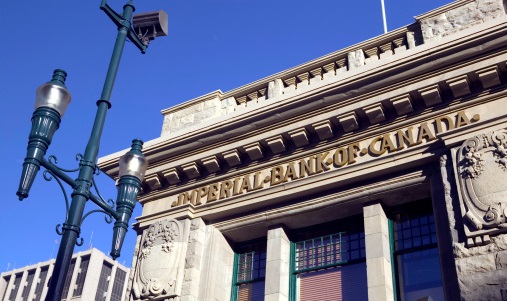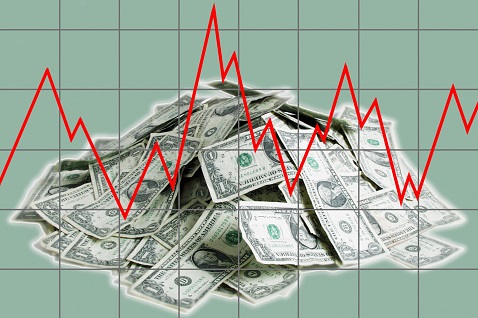The S&P 500 index saw a modest pullback from record levels during Wednesday’s Wall Street session despite continued strong earnings (notably Coca-Cola, McDonalds and General Motors all beat expectations), as a dramatic flattening of developed market yield curves stole the limelight on the session and triggered concerns amongst equity investors about the signal being sent by bond markets about the long-term growth and inflationary environment. In the end, the S&P 500 closed down by about 0.5% at the 4550 level, a level close to which index futures have continued to trade this morning. Meanwhile, the Nasdaq 100 was able to move higher yesterday, gaining about 0.3%, given the drop in long-term US yields and has further built on these gains this morning, with index futures up about 0.4% and now comfortably above the 15.65K level, as investors eye a test of record highs set at the start of September just to the north of the 15.7K level.
European equities are a little more subdued, with the Stoxx 600 up about 0.1% following yesterday’s 0.4% decline, with indices in the region having mostly managed to shrug off a negative Asia Pacific session hand-over. Last night’s Bank of Japan rate decision delivered few surprises and as expected, the bank held interest rates at -0.1%, maintained its 10-year yield target at around 0.0% and left its massive asset purchases programmes unchanged, whilst also releasing new growth and inflation forecasts, both of which got a downgrade, demonstrating how Japan seem for now immune to the spike in global inflationary pressures (though not to the slowdown of growth.
Unlike the Bank of Japan, the Bank of Canada’s rate decision yesterday did deliver surprises and was arguably a major catalyst behind the wave of yield curve flattening witnessed across global developed country yield markets seen in the last 24 hours. For reference, the bank left interest rates unchanged at 0.25% as expected but opted to axe its QE programme immediately (versus expectations for its to be merely tapered in October and ended by the year’s end). Moreover, the bank brought forward its guidance as to when it sees slack in the economy being absorbed to the “middle quarters” of 2022 from previously some time in H2 2022. That means it is saying rate hikes could occur as soon as April 2022. The more hawkish interest rate guidance comes despite a negative revision to the bank’s GDP growth forecasts and amid the bank upgrading its inflation forecasts and citing increased upside inflation risks.
In response to the meeting, Canadian 2-year yields rocketed as high as 1.15% from under 0.9%, while the 10-year yield was choppy in the 1.60% region (hence the massive flattening of the Canadian yield curve), and this outsized move in Canadian bond markets had a spill over impact on global bond markets. Notably, the US 2-year yield has continued to press higher and is now at fresh annual highs above 0.55% (it started the week under 0.45%), while the US 10-year has continued to slump and is now under 1.55% (it started the week around 1.65%). Note that much of the slide in long-term yields is being driven by a drop in real yields; US 10-year TIPS are now around -1.13% (it started the week above -1.0%) and not far from record lows set back in August at -1.17%. All the while, long-term market-based measures of inflation expectations (like the US 10-year breakeven) remain close to multi-year/decade highs. What does all of this mean?
Well, the move higher in short-end yields (like 2-year yields) shows anticipation for more aggressive rate hikes from central banks in response to the global inflationary pressures currently being witnessed. Elevated inflation expectations suggest just that; investors suspect that developed market economies like the US and EU will face higher inflationary pressures in the long-term, despite expectations for more aggressive near-term monetary policy tightening. Suppressed real yields suggest that long-term growth momentum is set to be weak and that central banks will thus be keeping policy historically accommodative over the long-term. To sum up then, bond markets are currently signalling that they increasingly expect “front-loaded” rate hiking cycles from the likes of the BoC (but also Fed, BoE and other major G10 central banks), but then for the “terminal” interest rate (i.e. the rate central banks hike to and then stop) to be low given weak long-term growth momentum. As long as growth is too weak, this might arguably constitute “goldi-locks conditions” for global equity markets (i.e. positive growth but not too strong that central banks have to tighten their monetary stances significantly), a positive sign the bull run may have further legs.
An interesting theme in markets right now is that money markets have been building up expectations for front-loaded rate hiking cycles even for the G10 central banks that have been signalling that this is not what they are going to do. Namely, the RBA and ECB. The former says no rate hikes until at least 2024 and has set a yield target on the April 2024 bond of 0.1% to back this guidance up. However, markets are testing the RBA’s resolve and have over the last few session “de-anchored” the yield of the April 2024 bond from its 0.1% target – we now await to see whether the RBA plans on stepping in to defend its dovish policy stance. If it does, money market pricing for three 25bps rate hikes from the RBA in 2022 seems excessive, and any dovish repricing could hit the Aussie dollar.
With regards to the ECB, they just released their latest policy decision; as expected, the deposit rate was held steady at -0.5%, maintained the pace of monthly QE purchases under the PEPP and reiterated that the programme is set to expire in March 2022 and that monthly QE purchases under the Asset Purchase Programme would continue at a pace of EUR 20B. No surprises there. The most interesting part of the meeting will be ECB President Lagarde’s press conference at 1330BST. She will be pressed to comment on current money market pricing which suggests investors expect at least 25bps of rate hikes by the end of 2022, expectations which seem inconsistent with the ECB’s recent strategy shift to a symmetric 2.0% inflation target, which raises the bar for rate hikes from the prior “close to but just below 2.0% target”. Lagarde is likely to reinforce that rate hikes are a long way off and the spike in inflation that has driven the hawkish shift in money market pricing is likely to be “transitory”. She may also be quizzed on what the ECB’s decision on post-PEPP QE policy might be but is likely to be reluctant to give away any details given that a final decision on this isn’t expected until December, when the bank also releases its next round of economic forecasts.
Looking elsewhere; oil prices continue to correct from the annual highs set back on Monday, with front-month WTI futures now back under $82.00 having been above $85.00 at the start of the week. We had bearish US inventory numbers this week, which has weighed on prices. Oil analysts are also citing Iran saying it will return to nuclear negotiations by the end of November (which could lead to a return to the JCPOA with the US and an end to Iranian oil export restrictions), lockdown worries in China and Russia and news that Putin is backing up his promise to ease the European gas shortage and will start sending gas after 8th November. Despite the big moves being seen in global bond markets as of late, FX markets remain subdued and are for the most part sticking to recent ranges ahead of Lagarde’s press conference and key US data in the form of advance Q3 GDP numbers and weekly jobless claims at 1330BST. For now, the DXY is trading within recent ranges just under the 94.00 level, EURUSD remains close to 1.1600, GBPUSD around 1.3750 and USDJPY just under 114.00. The euro has not seen too much of a reaction to hotter than expected preliminary Spanish and German October CPI reports this morning, which is likely to remain the case so long as the ECB continues to characterise the rise as “transitory”.




